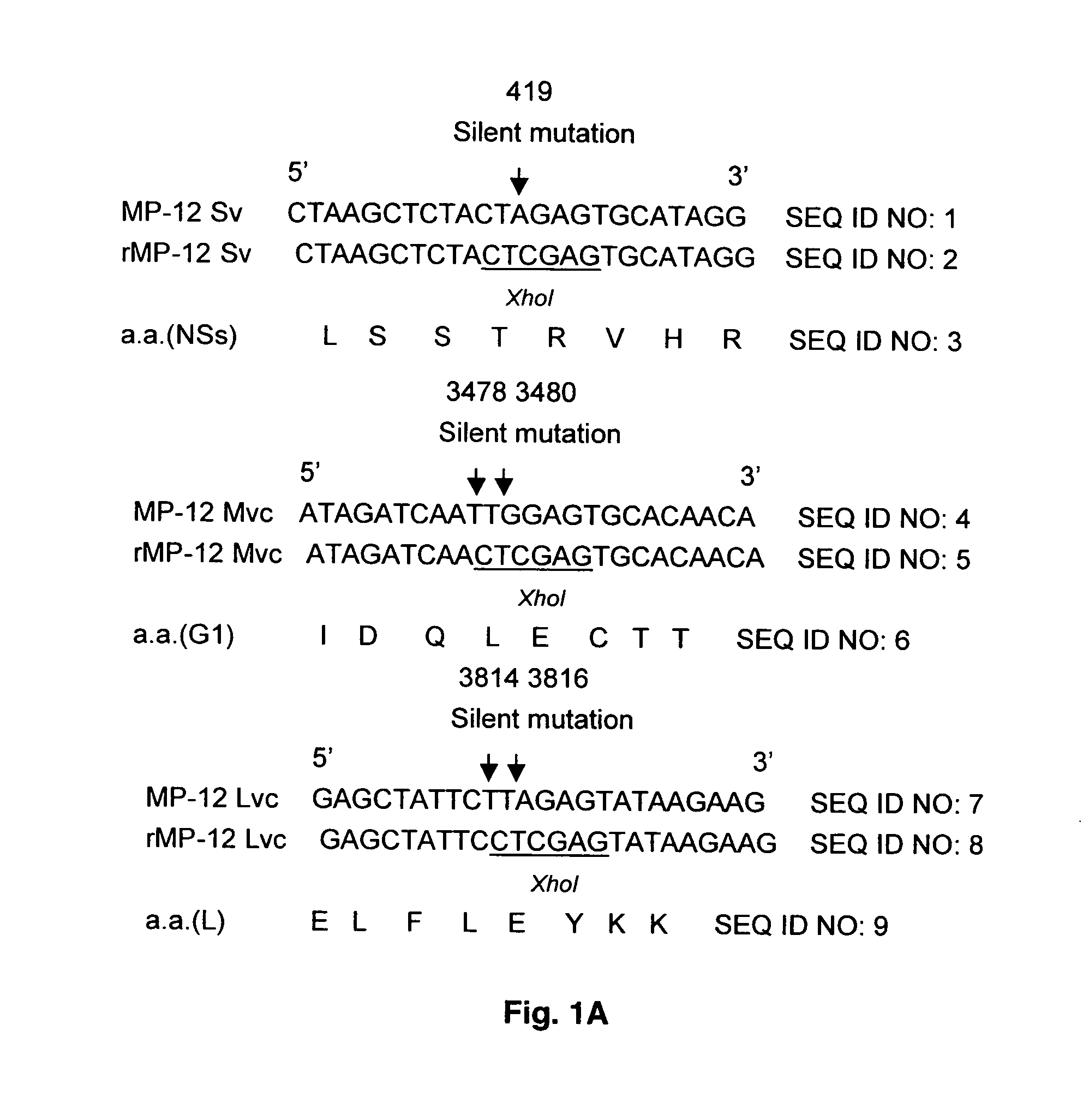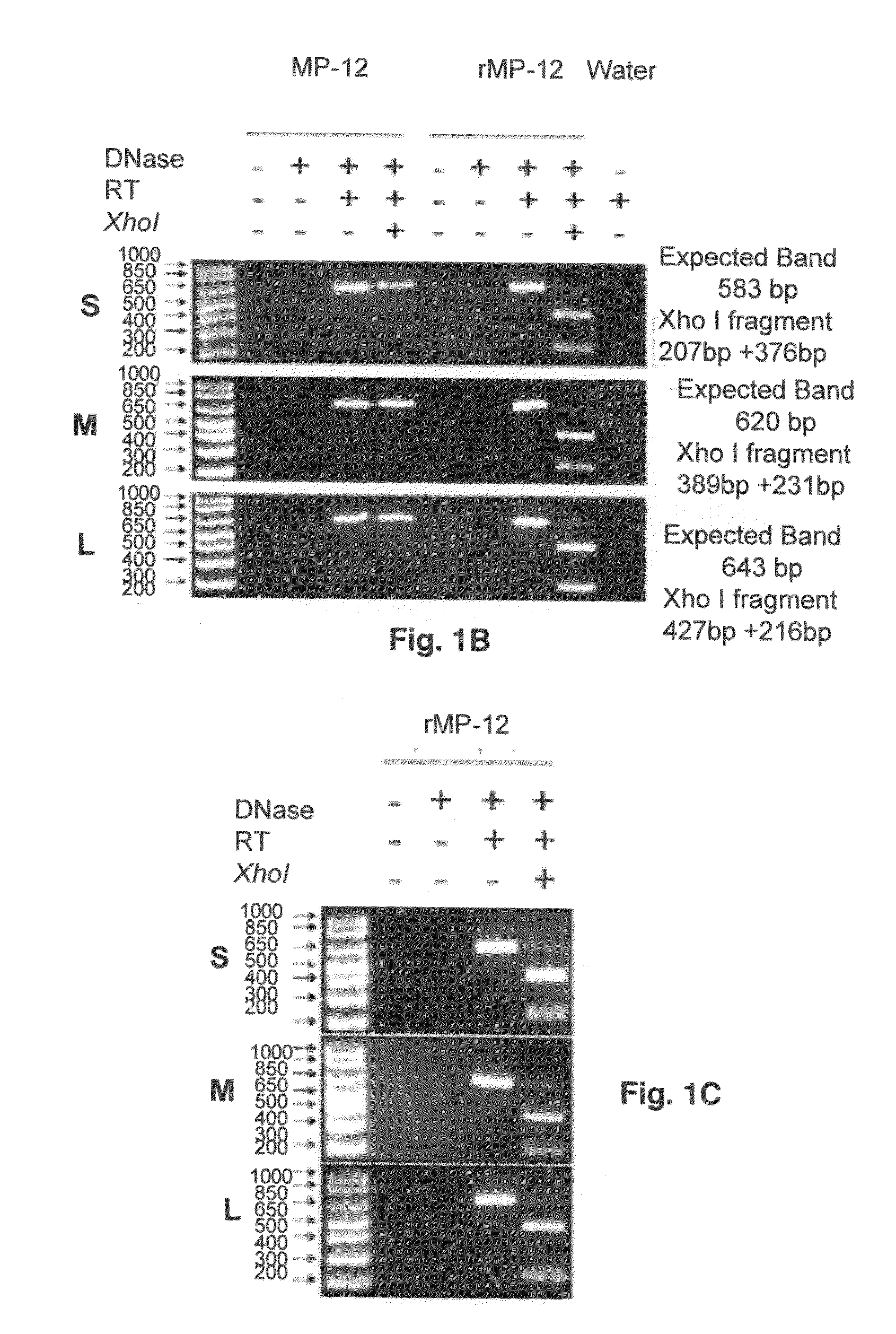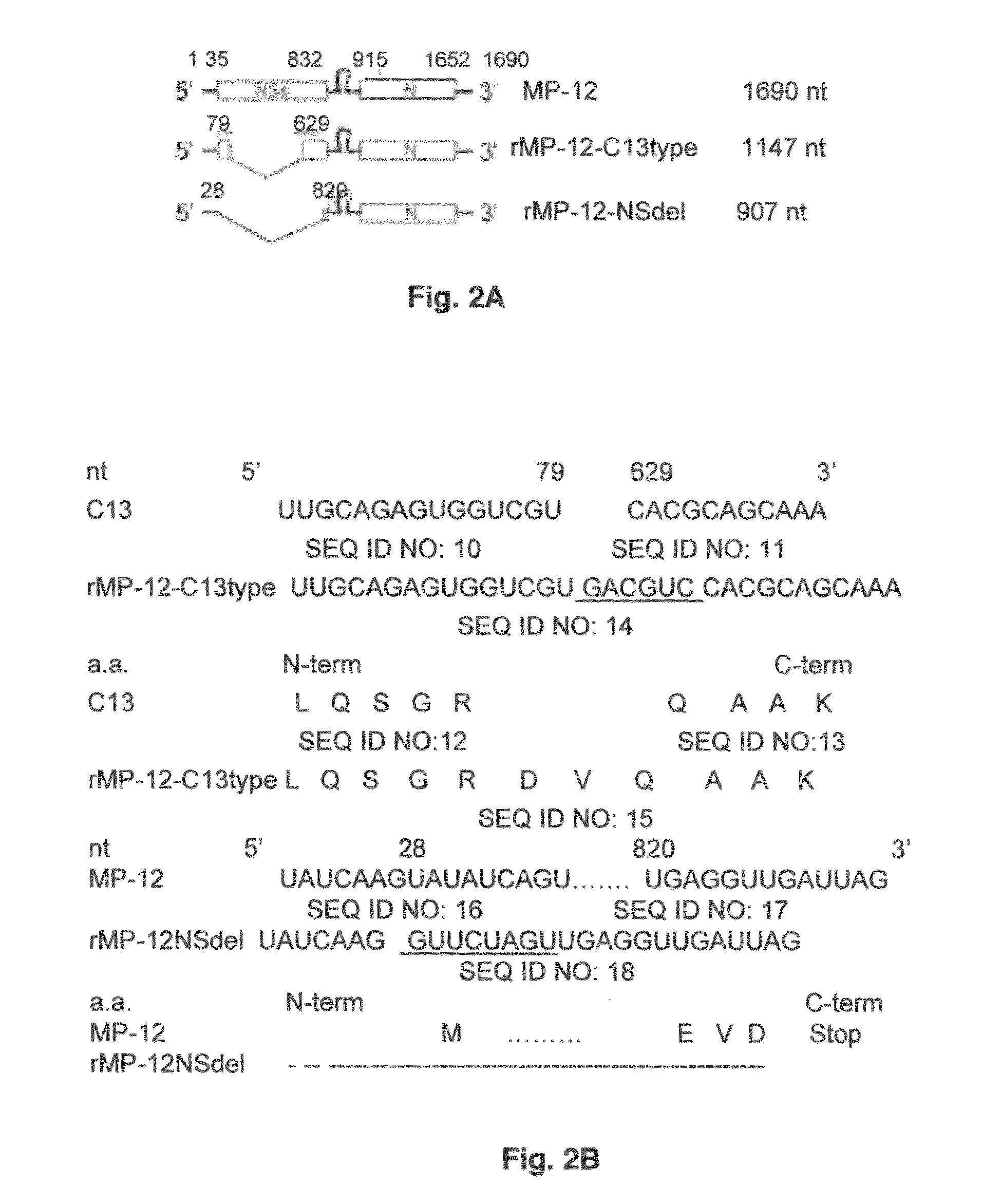Reverse genetic system for rift valley fever virus and uses thereof
a genetic system and virus technology, applied in the field of molecular biology, virology and immunology, can solve the problems of hemorrhagic fever, encephalitis, retinal vasculitis and lesser disease in humans, and the unsatisfactory quality of livestock vaccines availabl
- Summary
- Abstract
- Description
- Claims
- Application Information
AI Technical Summary
Benefits of technology
Problems solved by technology
Method used
Image
Examples
example 1
Media, Cells and Viruses
[0061]Vero, Vero E6 293 (human embryonic kidney) and MRC-5 (human diploid fibroblast) cells were maintained in Dulbecco's modified minimum essential medium (DMEM) containing 10% fetal calf serum (FCS), BHK-21 cells and BHK / T7-9 cells which express T7 RNA polymerase (Ito et al., 2003) were grown in MEM-alpha containing 10% FCS. Penicillin (100 U / ml) and streptomycin (100 μg / ml) were added to the media. BHK-T7-9 cells were selected in medium containing 600 μg / ml hygromycin. RVFV vaccine strain MP-12 was grown in BHK-21 cells and infectivity was assayed by plaques in Vero E6 cells.
example 2
[0062]RVFV MP-12 strain full-length S, M and L segments were cloned between Kpn I and Not I sites of the pPro-T7 plasmid which originated from pSinRep5 (Invitrogen) to express full-length anti-viral-sense segments, resulting inpPro-T7-S(+), pPro-T7-M(+) and pPro-T7-L(+). A XhoI site was introduced into each of the S, M and L sequence by site-directed mutagenesis. The pPro-T7-S(−), pPro-T7-M(−) and pPro-T7-L(−) were constructed using a similar strategy. The pPro-T7-S(+)C13 was made by introducing two AatII sites into pPro-T7-S(+), digesting with AatII and self ligation (FIG. 2B). The pPro-T7-S(+)NSdel was made by introducing SpeI and HpaI near the ends of NSs ORF, digesting with SpeI and HpaI, filling in by T4 DNA polymerase and self-ligation (FIG. 2B).
[0063]Additionally, pPro-T7-S(+)rLuc was also made by inserting a Renilla luciferase ORF between SpeI and HpaI site of pPro-T7-S(+) (FIG. 3A). The pT7-IRES-vN, pT7-IRES-vNSs and pT7-IRES-vL expressing N, NSs and L protein were c...
example 3
Virus Rescue
[0064]Subconfluent monolayers of BHK / T7-9 cells in 60 mm dishes were cotransfected with pPro-T7-S(+), pPro-T7-M(+), pPro-T7-L(+), pT7-IRES-vN and pCAGGS-vG, all of which were 2.2 μg and 1.1 μg of pT7-IRES-vL using TransIT-LT1 (Mirus). Twenty-four hours later, culture medium was replaced with fresh medium. Five days later, the culture supernatants were passaged into BHK-21 cells.
PUM
| Property | Measurement | Unit |
|---|---|---|
| temperature | aaaaa | aaaaa |
| diameter | aaaaa | aaaaa |
| OD | aaaaa | aaaaa |
Abstract
Description
Claims
Application Information
 Login to View More
Login to View More - R&D
- Intellectual Property
- Life Sciences
- Materials
- Tech Scout
- Unparalleled Data Quality
- Higher Quality Content
- 60% Fewer Hallucinations
Browse by: Latest US Patents, China's latest patents, Technical Efficacy Thesaurus, Application Domain, Technology Topic, Popular Technical Reports.
© 2025 PatSnap. All rights reserved.Legal|Privacy policy|Modern Slavery Act Transparency Statement|Sitemap|About US| Contact US: help@patsnap.com



